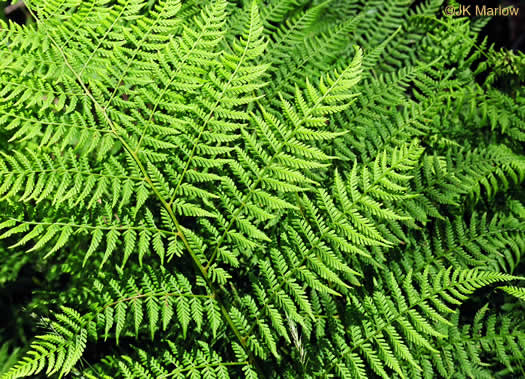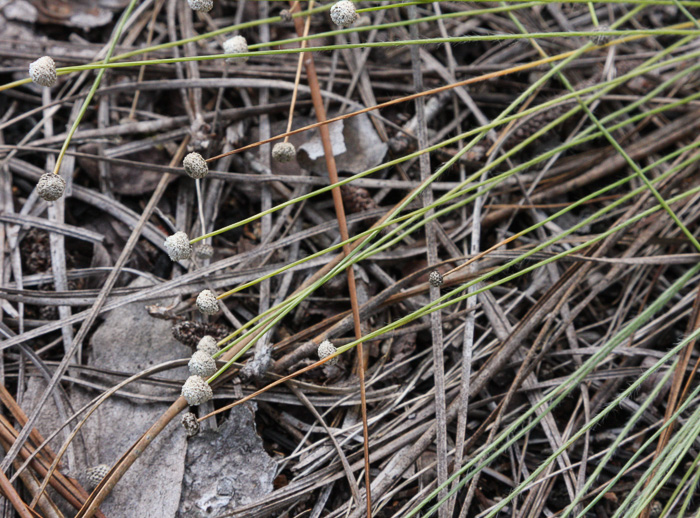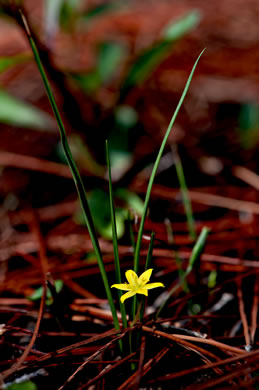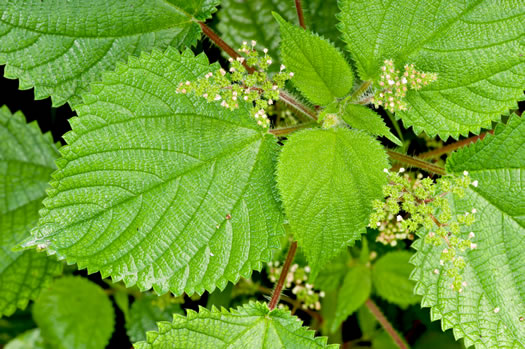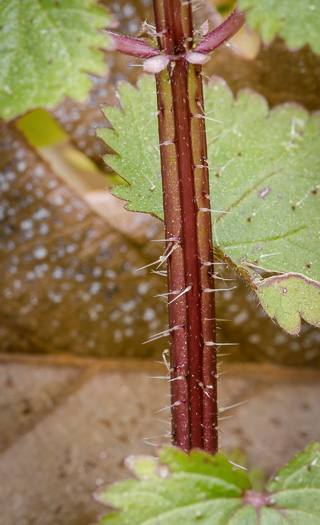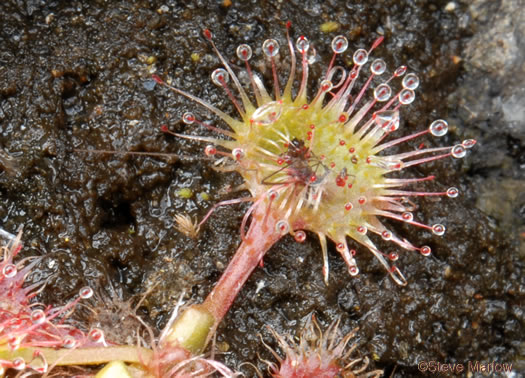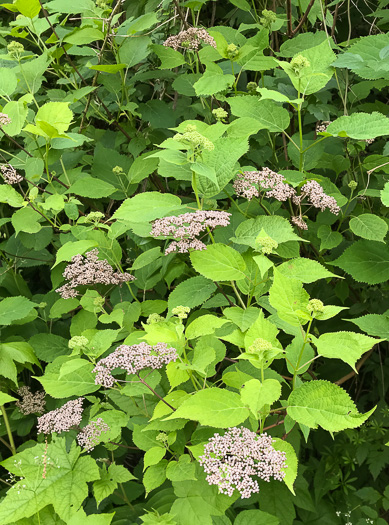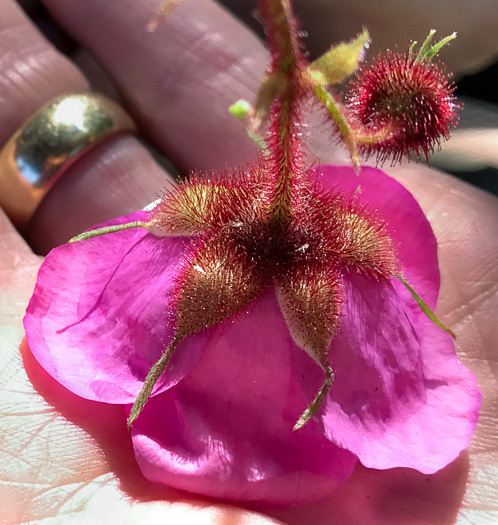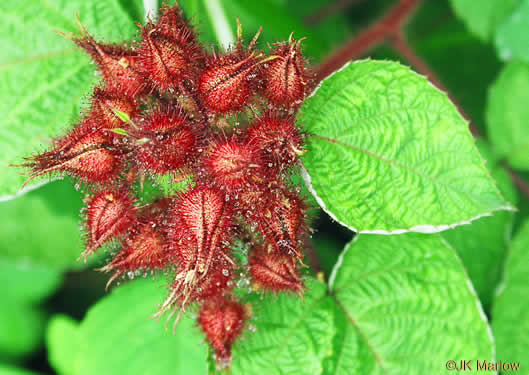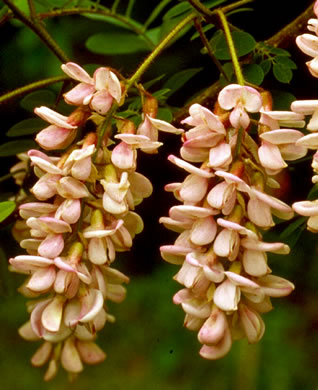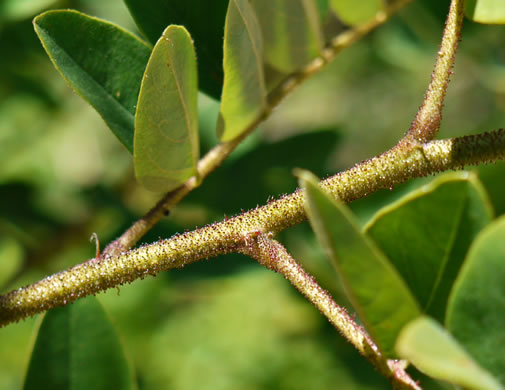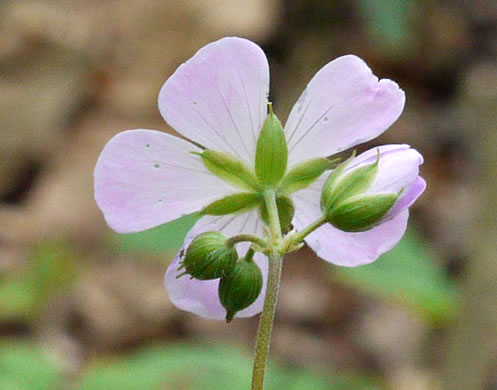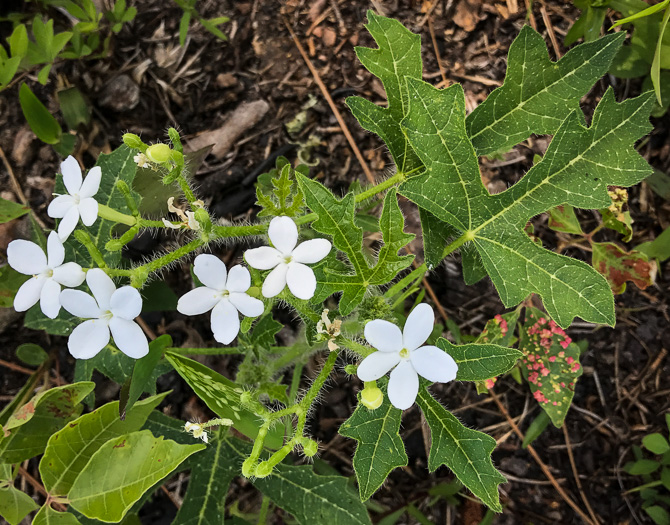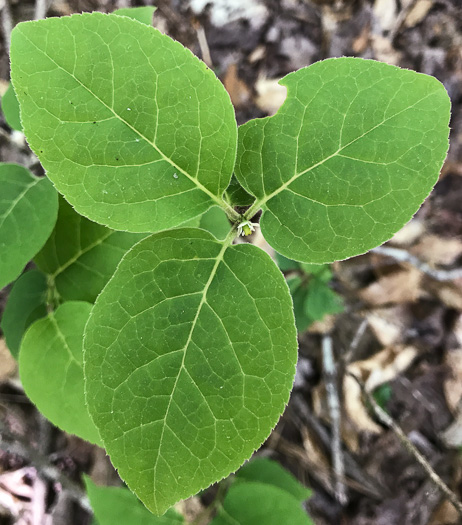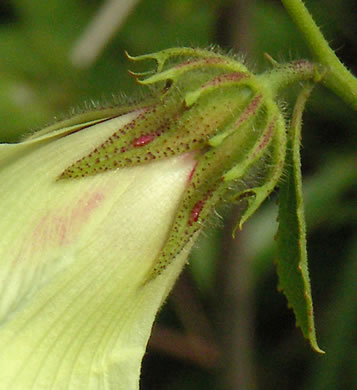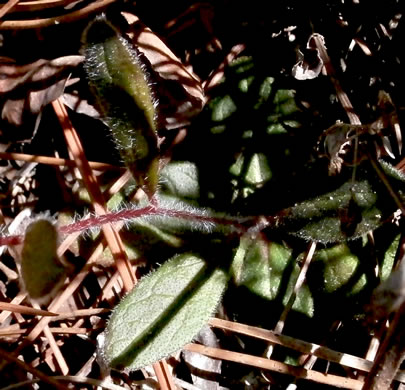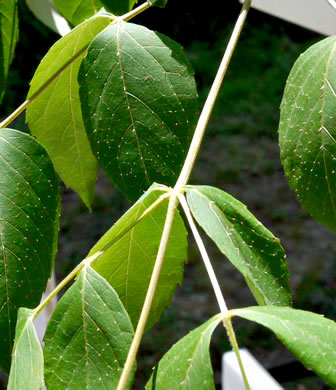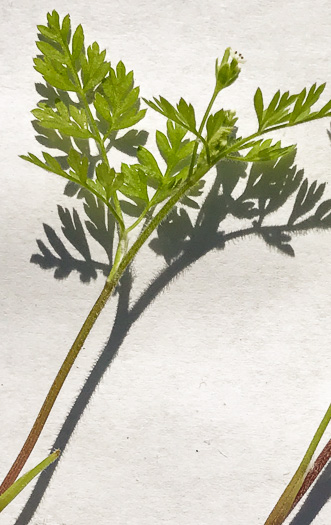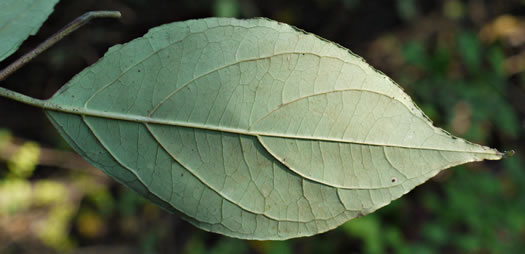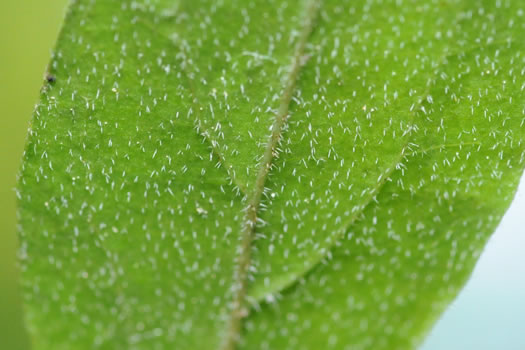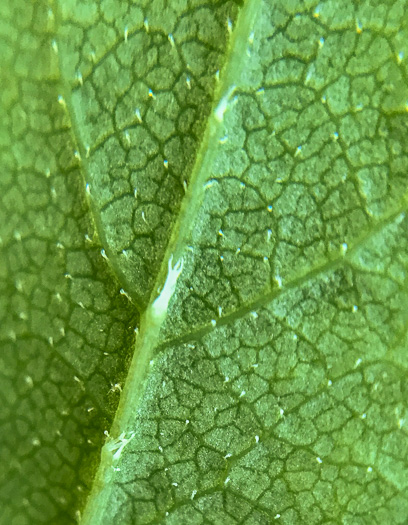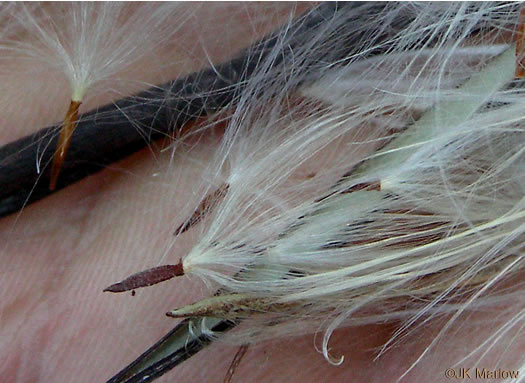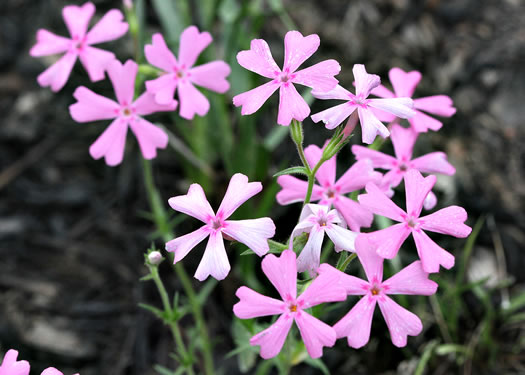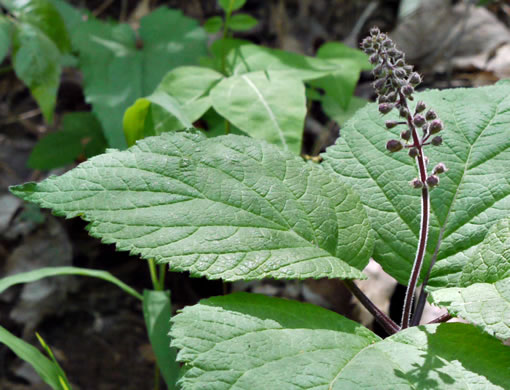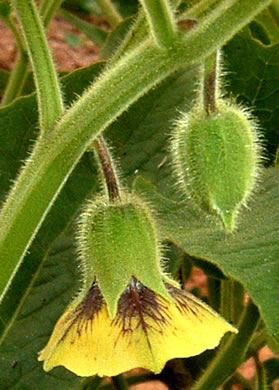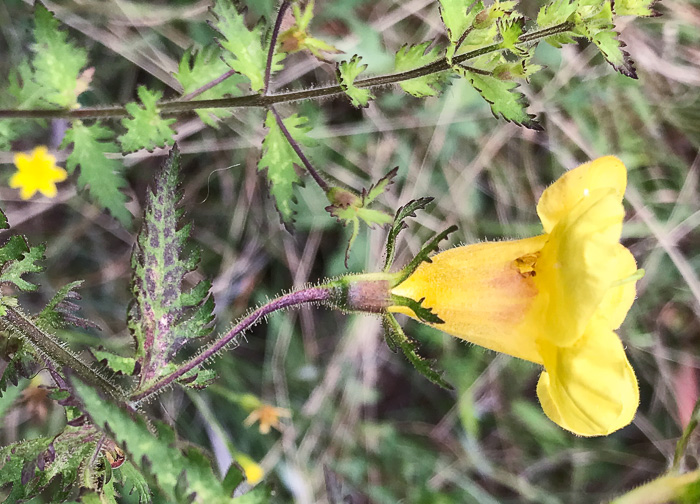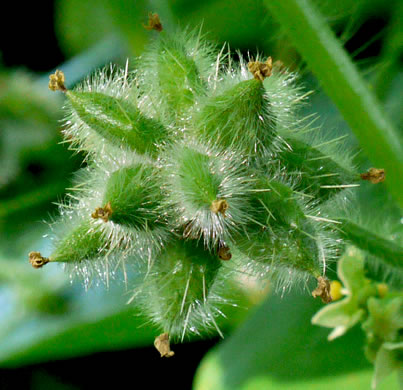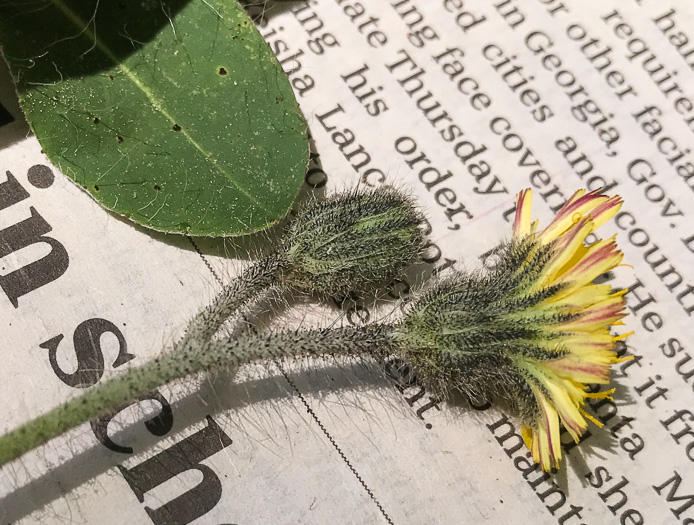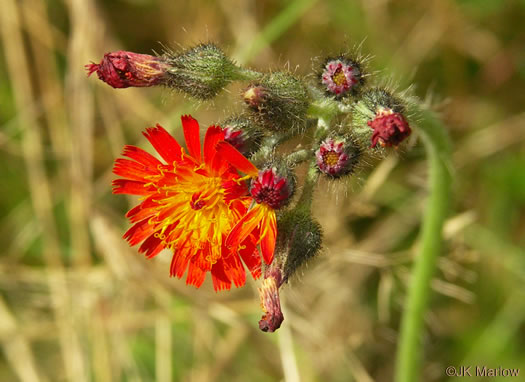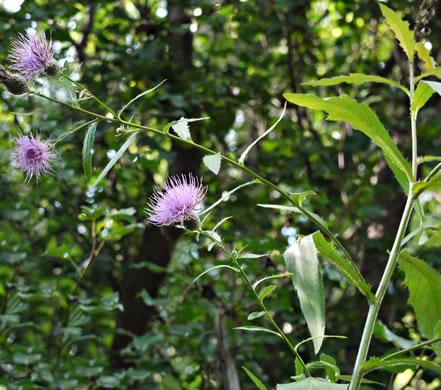Your search found 31 image(s) illustrating the term "trichome." For a written explanation, click on "trichome" in the Glossary.
To see larger pictures, click or hover over the thumbnails.
To go to the plant's detail page, click its name.
 Hay-scented Fern,
Sitobolium punctilobulum
Hay-scented Fern,
Sitobolium punctilobulum
Leaves yellow-green or pale-green, with whitish-gray glandular trichomes, per Weakley's Flora.
 Southern Bogbuttons,
Lachnocaulon beyrichianum
Southern Bogbuttons,
Lachnocaulon beyrichianum
Heads appear gray to white because of milky-white receptacular bract trichomes, per Weakley's Flora.
 Fringed Stargrass,
Hypoxis juncea
Fringed Stargrass,
Hypoxis juncea
Lvs <1mm wide, hard, stiff, nearly glabrous or w scattered trichomes near base, per Flora of North America.
 West Indian Wood-nettle,
Laportea aestuans
West Indian Wood-nettle,
Laportea aestuans
Plants with stipitate-glandular trichomes as well as stinging trichomes, per Weakley's Flora (2015).
 Weak Nettle,
Urtica chamaedryoides
Weak Nettle,
Urtica chamaedryoides
Stinging trichomes, per Vascular Flora of the Carolinas (Radford, Ahles, & Bell, 1968).
 Roundleaf Sundew,
Drosera rotundifolia
Roundleaf Sundew,
Drosera rotundifolia
The glistening sticky secretion of glandular trichomes aids in insect catching, per Vascular Flora of the Carolinas (Radford, Ahles, & Bell, 1968).
 Smooth Hydrangea,
Hydrangea arborescens
Smooth Hydrangea,
Hydrangea arborescens
... trichomes of the lower leaf surface restricted to midrib & major veins, per Weakley's Flora (2023).
 Purple Flowering-raspberry,
Rubacer odoratum
Purple Flowering-raspberry,
Rubacer odoratum
Peduncles, pedicels and calyx covered with gland-tipped red trichomes, per Vascular Flora of the Carolinas (Radford, Ahles, & Bell, 1968).
 Wineberry,
Rubus phoenicolasius
Wineberry,
Rubus phoenicolasius
Sepals, covered w red-tipped glandular trichomes, enclose fruit until maturity, per Vascular Flora of the Carolinas (Radford, Ahles, & Bell, 1968).
 Red Chokeberry,
Aronia arbutifolia
Red Chokeberry,
Aronia arbutifolia
Aronia can be distinguished by the presence of dark glandular trichomes on midrib's upper surface, per Weakley's Flora (2025).
 Granite Dome Locust,
Robinia hartwigii
Granite Dome Locust,
Robinia hartwigii
Racemes with short-stalked glandular trichomes; petals roseate or whitish, per Vascular Flora of the Carolinas (Radford, Ahles, & Bell, 1968).
 Granite Dome Locust,
Robinia hartwigii
Granite Dome Locust,
Robinia hartwigii
Branches and branchlets bearing viscid glands elevated
on short trichomes, per Revision of the genus Robinia (Leguminosae: Papilionoideae) (Peabody, 1984).
 Wild Geranium,
Geranium maculatum
Wild Geranium,
Geranium maculatum
Sepals 7-10mm long excluding the 1-3mm mucro, canescent with long trichomes, per Vascular Flora of the Carolinas (Radford, Ahles, & Bell, 1968).
 Spurge-nettle,
Cnidoscolus stimulosus
Spurge-nettle,
Cnidoscolus stimulosus
Beset with stinging trichomes, per Weakley's Flora (2012).
 Carolina Holly,
Ilex ambigua
Carolina Holly,
Ilex ambigua
Petiole w U-shaped channel above, white appressed trichomes in the channel, per Weakley's Flora (2020).
 Savanna Hibiscus,
Hibiscus aculeatus
Savanna Hibiscus,
Hibiscus aculeatus
Calyx lobes triangular-lanceolate, with long stiff pustulate-based trichomes, per Vascular Flora of the Carolinas (Radford, Ahles, & Bell, 1968).
 Carolina Sunrose,
Crocanthemum carolinianum
Carolina Sunrose,
Crocanthemum carolinianum
Stem w spreading trichomes to 2.5mm; most prominent leaves in a basal rosette, per Weakley's Flora.
 Devil's Walkingstick,
Aralia spinosa
Devil's Walkingstick,
Aralia spinosa
Leaves glabrous or glabrate [here note the widely spaced trichomes], per Vascular Flora of the Carolinas (Radford, Ahles, & Bell, 1968).
 Southern Chervil,
Chaerophyllum tainturieri
Southern Chervil,
Chaerophyllum tainturieri
Stems hispid, trichomes spreading, or retrorse below [look at the shadow], per Vascular Flora of the Carolinas (Radford, Ahles, & Bell, 1968).
 Southern Swamp Dogwood,
Swida foemina
Southern Swamp Dogwood,
Swida foemina
Leaves glabrous beneath or with a few short, straight, appressed trichomes, per Vascular Flora of the Carolinas (Radford, Ahles, & Bell, 1968).
 Eastern Roughleaf Dogwood,
Swida asperifolia
Eastern Roughleaf Dogwood,
Swida asperifolia
Leaves scabrous, trichomes forked or curling, spreading or appressed, per Vascular Flora of the Carolinas (Radford, Ahles, & Bell, 1968).
 Minniebush,
Rhododendron pilosum
Minniebush,
Rhododendron pilosum
... the series of fascicles of glandular trichomes along the leaf midrib below, per Weakley's Flora (2023).
 Indian-hemp,
Apocynum cannabinum
Indian-hemp,
Apocynum cannabinum
Seeds elongate, smooth, with a tuft of soft hairs or trichomes, per Vascular Flora of the Carolinas (Radford, Ahles, & Bell, 1968).
 Pineland Phlox,
Phlox nivalis +
Pineland Phlox,
Phlox nivalis +
Calyx lobes slightly less than or = tube, pubescent, some trichomes glandular, per Vascular Flora of the Carolinas (Radford, Ahles, & Bell, 1968).
 Whorled Horsebalm,
Collinsonia verticillata
Whorled Horsebalm,
Collinsonia verticillata
Thyrse narrow, rachis densely pilose with gland-tipped trichomes, per Vascular Flora of the Carolinas (Radford, Ahles, & Bell, 1968).
 Clammy Ground-cherry,
Physalis heterophylla
Clammy Ground-cherry,
Physalis heterophylla
Pubescence viscid, glandular trichomes usually mixed with short and long hairs, per Weakley's Flora.
 Southern Oak-leach,
Aureolaria pectinata
Southern Oak-leach,
Aureolaria pectinata
Trichomes of the leaves usually glandular, at least in part; leaf lobes usually acute, per Weakley's Flora (2023).
 Bur-cucumber,
Sicyos angulatus
Bur-cucumber,
Sicyos angulatus
Ellipsoid berries are 1-2 cm long and hispid with long brittle trichomes, per Vascular Flora of the Carolinas (Radford, Ahles, & Bell, 1968).
 Mouse-ear Hawkweed,
Pilosella officinarum
Mouse-ear Hawkweed,
Pilosella officinarum
Involucres 7-12mm long, clothed with black trichomes and stipitate glands, per Vascular Flora of the Carolinas (Radford, Ahles, & Bell, 1968).
 Orange Hawkweed,
Pilosella aurantiaca
Orange Hawkweed,
Pilosella aurantiaca
Involucres densely clothed with black trichomes & stipitate glands, per Vascular Flora of the Carolinas (Radford, Ahles, & Bell, 1968).
 Tall Thistle,
Cirsium altissimum
Tall Thistle,
Cirsium altissimum
Stems villous with septate trichomes, sometimes ± glabrate, sometimes distally thinly tomentose, per Flora of North America.

